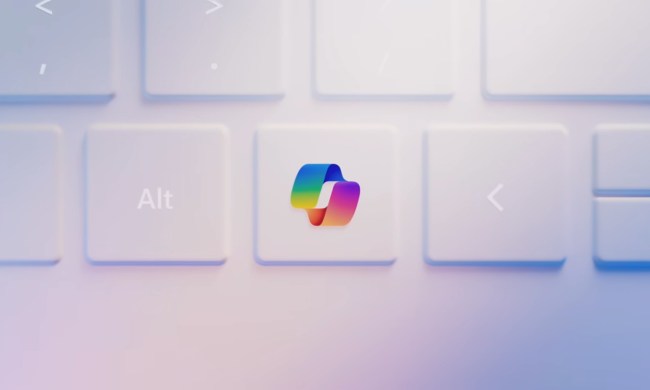Windows continues to be the most widely used operating system in the world, powering over a billion devices from personal laptops and desktops to workstations and enterprise machines. It is the backbone of daily digital life for students, gamers, office workers, and creative professionals alike.
Over the decades, Windows has evolved from a simple graphical interface into a robust and sophisticated platform. With new technologies like artificial intelligence now influencing operating systems, Microsoft has shifted from a slow release cycle to more frequent and incremental updates.
Whether you’re buying a new device, upgrading from an older version, or simply curious about what’s coming next, understanding Windows today is more important than ever.
What is Windows?
Windows is an operating system created by Microsoft that provides the foundation for how users interact with their computers. It manages hardware resources, runs software applications, and provides a graphical user interface (GUI) that allows users to easily perform tasks like browsing the internet, editing documents, playing games, or managing files.

Since its first release in 1985 , Windows has become a standard across both consumer and business environments. Its long-standing success can be attributed to its vast compatibility with hardware, a rich ecosystem of third-party software, and ongoing updates that keep it relevant in the modern computing era.
What’s the latest Windows version?
The current version of Microsoft’s operating system is Windows 11, which officially launched in October 2021. It marked a major visual and functional upgrade over Windows 10, introducing a centered taskbar, rounded window corners, and streamlined settings. Windows 11 also introduced features like Snap Layouts for improved multitasking, better touch and pen input, and deeper integration with Microsoft services.
More recently, Microsoft released the 24H2 update, which began rolling out in mid-2024. This update brings broader support for AI hardware, improved security with more advanced chip-level protection, and faster boot and update times. Perhaps the most talked-about features are Copilot , the built-in AI assistant that integrates across the OS, and Recall , a timeline-like searchable history of your activity across apps.
These additions make Windows 11 a more intelligent and responsive operating system, especially on newer devices optimized for AI processing.

Microsoft has officially confirmed that the upcoming Windows 11 version 25H2 update will roll out in late 2025, marking its fourth major feature release. Unlike previous versions, this forthcoming update will install via a lightweight enablement package, making the upgrade experience nearly as fast as a typical cumulative update where no full OS reinstall is required.
Under the hood, version 25H2 shares the same platform and servicing stack as the current 24H2 release. This means Microsoft can deliver security and feature updates to both versions simultaneously, with 25H2-specific features initially included in a disabled state on 24H2 and activated later via the enablement package
Currently, preview builds available to Windows Insiders show no visible new features compared to 24H2 suggesting Microsoft is staging major functional changes behind the scenes before a full rollout. Expect the 25H2 update to release later this year, aligning closely with the scheduled end of support for Windows 10 in October.
The next Windows version
Although Microsoft hasn’t officially announced Windows 12, development is well underway on what’s expected to be the next major version. Rumored to be internally codenamed Hudson Valley, this future release could debut in late 2026 or early 2027. As per early leaks, it will continue the company’s shift toward AI-first computing, with an enhanced version of Copilot, improved recommendations based on your activity, and a more adaptive user interface.

Windows 12 may also adopt a modular architecture that allows users to install or remove specific components based on need, reducing system bloat and improving performance. While Microsoft hasn’t confirmed any features, there is widespread anticipation that the OS will better align with modern cloud workflows, AI-assisted productivity, and longer-lasting battery life on portable devices.
What Windows version do I have?
To find out which version of Windows you’re running, simply press the Windows key + R, type winver , and hit Enter. A window will appear showing your current version and build number.
Alternatively, you can head to the Settings app, click on System , then About , to see detailed information about your edition, version, and system type. This is helpful when troubleshooting, checking compatibility, or determining whether you’re eligible for updates or new features.
How much does Windows 11 cost?
If you’re already using Windows 10 and your system meets the requirements, upgrading to Windows 11 is free of cost . Microsoft continues to support in-place upgrades that preserve your apps, files, and settings. However, for new installations, such as on a custom-built PC or a device without an existing Windows license, you’ll need to purchase a digital copy.
As of now, Windows 11 Home is priced at $139, while Windows 11 Pro costs $199.99. Most laptops and prebuilt desktops come with a Windows license pre-installed, so only users building their own systems or deploying devices in bulk will need to buy a license separately.
Should I upgrade to Windows 11?
With the end-of-support date for Windows 10 set for October 14, 2025, users still running the older OS are approaching a critical decision point. After that date, Microsoft will no longer provide security updates, leaving systems increasingly vulnerable to emerging threats. That alone is a compelling reason to upgrade , especially for those who rely on their machines for work, study, or sensitive data.
Windows 11 offers several compelling advantages over its predecessor. It delivers a more modern user interface, better native support for hybrid and touchscreen devices, and improvements in overall performance and energy efficiency. Security is also greatly enhanced, with features like Secure Boot, TPM 2.0, and support for Microsoft’s Pluton security chip on newer hardware helping to reduce attack vectors.
But the biggest leap may be in its AI capabilities. With features like Copilot and Recall built into the OS, Windows 11 is designed to help users be more productive and responsive, especially in professional and academic environments. These tools can summarize documents, manage tasks, and even provide smart suggestions for workflows—all directly within the operating system.
However, upgrading isn’t always straightforward. Some older systems won’t meet the stringent requirements for Windows 11, such as needing a compatible CPU and TPM 2.0. For those users, continuing with Windows 10 is acceptable for now, but they should begin considering hardware upgrades or new systems within the next year.
For users with eligible devices, upgrading to Windows 11 today ensures they’re prepared for what’s next and can take full advantage of Microsoft’s latest improvements.




